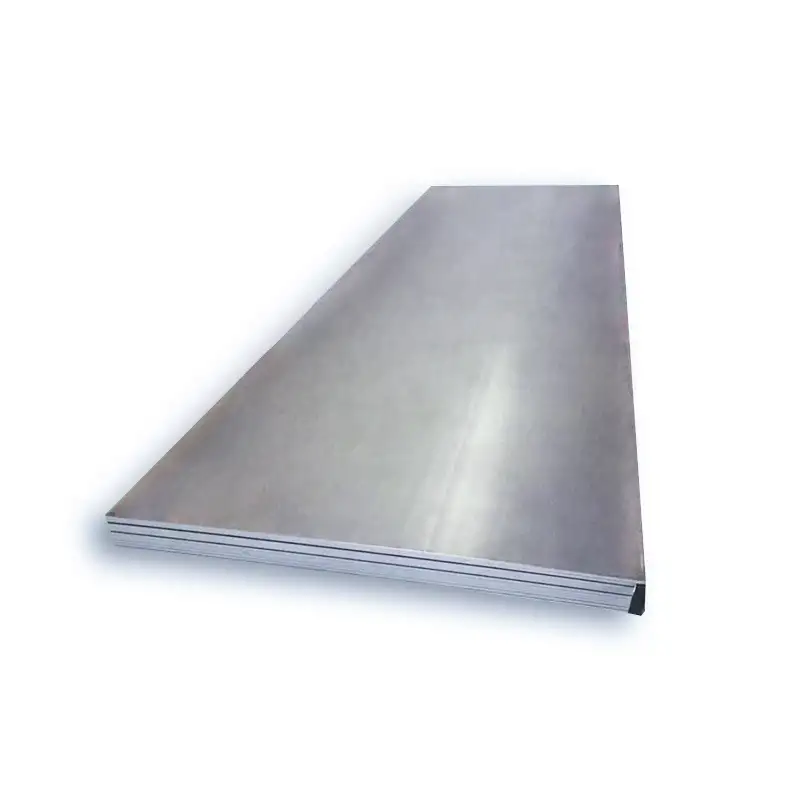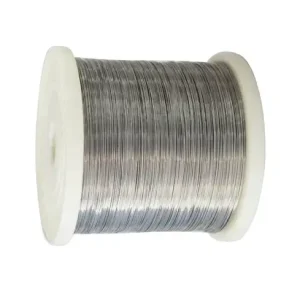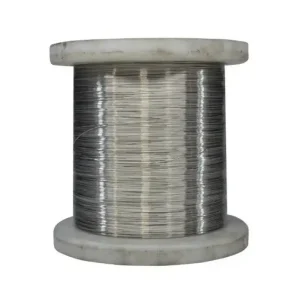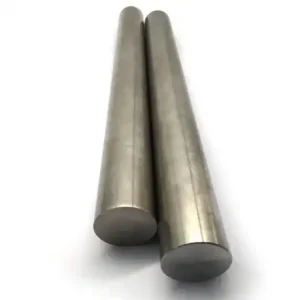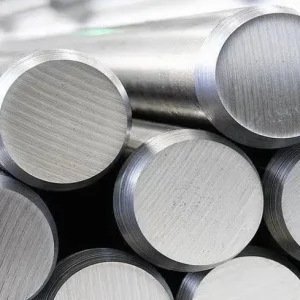ASTM A387 (ASME SA-387) chrome-moly plates — particularly Grades 5, 9, 11, 12, 22 and 91 — are purpose-engineered low-alloy steels for welded boilers and pressure vessels operating at elevated temperatures; choose Grade 5/9 for higher chromium applications, Grade 11/12 for mid-range chrome/moly needs, Grade 22 where improved creep resistance is needed, and Grade 91 for the highest temperature/creep strength; MWAlloys supplies factory-priced, certified SA-387 plates with rapid stock delivery for global projects.
What this specification covers
ASTM A387 / ASME SA-387 is the standard that defines chromium-molybdenum alloy steel plates intended primarily for welded boilers and pressure vessels designed for elevated-temperature service. The standard lists several grades that differ mainly by nominal chromium and molybdenum content; tensile and yield requirements vary by Class 1 and Class 2. The specification demands killed steel, controlled chemistry, and heat treatment appropriate to the grade and class.
How the grades differ
-
Grade 5 — high chromium (≈4–6%), moderate Mo (≈0.45–0.65%): improved oxidation/corrosion resistance at elevated temperature; used where chromia scale is desirable.
-
Grade 9 — high chromium (≈8–10%) and higher molybdenum (≈0.85–1.15%): more heat strength and oxidation resistance than lower-Cr grades.
-
Grade 11 / 12 — lower Cr (≈1–1.5% Cr) and moderate Mo (≈0.45–0.65%): good balance of toughness and elevated-temperature strength; common for many power and petrochemical boilers.
-
Grade 22 — mid-Cr (≈2.0–2.5% Cr), higher Mo (≈0.9–1.1%): improved creep strength over Grade 11/12 at higher service temperatures.
-
Grade 91 — a 9% Cr, 1% Mo martensitic, creep-strengthened alloy (with V, Nb, N additions) for high-temperature power plant service (long-term creep resistance). Handle as a distinct metallurgy (controlled forging, PWHT requirements).
(Notes: the grade chemistry and mechanical limits are in the ASTM text; Class 1 vs Class 2 mostly affects mechanical/tensile requirements rather than chemical ranges.)
Chemical composition — consolidated table
The table below summarizes typical heat and product analysis ranges from public technical datasheets and material references for the grades requested. Use mill certificates for exact lot values when procuring.
| Element / Grade | 5 (Cr≈4–6) | 9 (Cr≈8–10) | 11 (Cr≈1–1.5) | 12 (Cr≈0.8–1.15) | 22 (Cr≈2.0–2.5) | 91 (≈9Cr-1Mo + additions) |
|---|---|---|---|---|---|---|
| C (max / range %) | 0.15 (max) | 0.15 (max) | 0.05–0.17 | 0.05–0.17 | 0.05–0.15 | 0.08–0.12 (typical) |
| Mn (%) | 0.30–0.60 | 0.30–0.60 | 0.40–0.65 | 0.40–0.65 | 0.30–0.60 | 0.40–0.80 |
| Si (%) | ≤0.50 | ≤1.05 | 0.5–0.8 | 0.13–0.45 | ≤0.50 | 0.20–0.60 |
| P (max %) | 0.030–0.035 | 0.030 | 0.035 | 0.035 | 0.035 | ≤0.020–0.030 |
| S (max %) | 0.030 | 0.030 | 0.035 | 0.035 | 0.035 | ≤0.010–0.020 |
| Cr (%) | 4.0–6.0 | 8.0–10.0 | 1.0–1.5 | 0.80–1.15 | 2.0–2.5 | ~8.0–9.5 |
| Mo (%) | 0.45–0.65 | 0.85–1.10 | 0.45–0.65 | 0.45–0.60 | 0.90–1.10 | 0.85–1.05 |
| V, Nb, N, etc. | — | — | — | — | — | V 0.15–0.25, Nb (Cb) 0.04–0.10, N trace — used for creep strength |
(Compiled ranges from public datasheets and technical notes — always confirm with the mill certificate.)
Mechanical / typical material properties
| Property (typ.) | Grade 5 | Grade 9 | Grade 11 | Grade 12 | Grade 22 | Grade 91 |
|---|---|---|---|---|---|---|
| Tensile strength, MPa (Class 2 typical) | 515–690 | 515–690 | 515–690 | 450–585 | 515–690 | 585–760 |
| Yield strength, MPa (min, 0.2% off) | ~310 | ~310 | 310 | 275 | 310 | 415 (higher) |
| Elongation (%) | 18–22 | 18–22 | 22 | 22 | 22 | 18–22 |
| Hardness | Moderate | Moderate | Moderate | Moderate | Moderate | Higher (martensitic/normalized & tempered) |
| Elevated temperature use | Good | Better | Moderate | Moderate | Good | Excellent (creep service) |
(Specific tensile/yield bands vary by Class 1 vs Class 2 and thickness; use the ASTM/ASME tables for contract verification.)
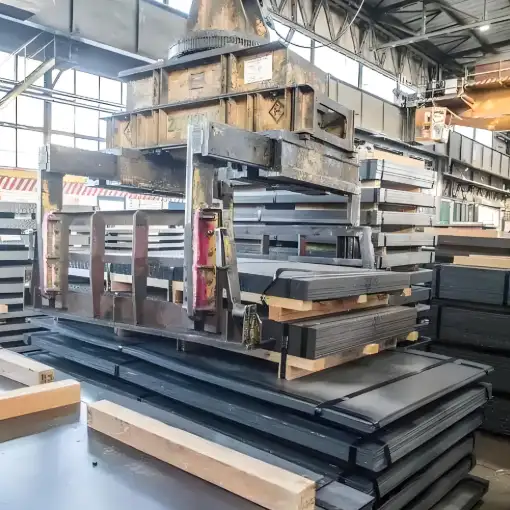
Specification details and ordering information
When placing an order, specify at minimum:
-
Specification & edition: ASTM A387 / ASME SA-387 (cite year), and Class (1 or 2).
-
Grade: 5, 9, 11, 12, 22, or 91.
-
Thickness & size: confirm available mill plate sizes; many mills supply 6–100 mm or thicker, depending on grade.
-
Heat treatment: normalized + tempered or quenched + tempered where required (especially Grade 91 — strict PWHT and controlled procedures).
-
Inspection & tests: Mill Test Certificate (EN 10204 3.1 / 3.2 as needed), PMI/chemical analysis, UT/UT+RT where contract requires, hardness, tensile/charpy where specified.
-
Traceability & marking: ask for heat number stamping, plate marking, and certified test reports.
Equivalents & code numbers
Engineers commonly map A387 grades to ASME P-numbers, to ASTM/ASME pipe grades (A335/P grades), and to European EN/DIN steel designations. Typical cross-references:
| A387 Grade | Common ASME P-number / Equivalent product form | Typical European/DIN equivalent (common) |
|---|---|---|
| Grade 5 | P5 (equivalent to P5 family in ASME context) | 12CrMo (depending on product) — check exact match |
| Grade 9 | P9 family (ASTM A335 P9) | 9Cr steels (varies) |
| Grade 11 | P11 (ASTM A335 P11) | 13CrMo4-5 / 1.7380 (often used equivalent in EU) |
| Grade 12 | P12 | 13CrMo4-5 variants |
| Grade 22 | P22 (ASTM A335 P22) | 10CrMo9-10 / 1.7380 variants (confirm local code) |
| Grade 91 | P91 (ASTM A335 P91) | X10CrMoVNb9-1 (EN 1.4903 / P91 equivalents) |
Important: European equivalents are approximate and must be validated for chemical limits, mechanicals and heat treatment — do not substitute without engineering sign-off and code compliance checks.
Fabrication, welding and heat treatment notes
-
Welding: preheat and interpass temperatures, welding consumable selection, and PWHT requirements depend on grade. Grades 5–22 follow standard chrome-moly welding practice; Grade 91 requires careful procedure qualification: matching consumables, controlled heat input, and post-weld heat treatment (PWHT) to avoid embrittlement and preserve creep strength.
-
PWHT: Grade-specific and thickness-dependent; consult ASME BPVC and mill recommendations. Grade 91 often has stricter PWHT windows and longer soak times.
-
Machining and forming: plates are hot-rolled; machining is straightforward on lower Cr grades. For Grade 91 expect higher hardness after heat treatment — machine accordingly.
-
NDT: UT is standard for plates used in pressure vessels; RT may be required on welds or critical items per code.
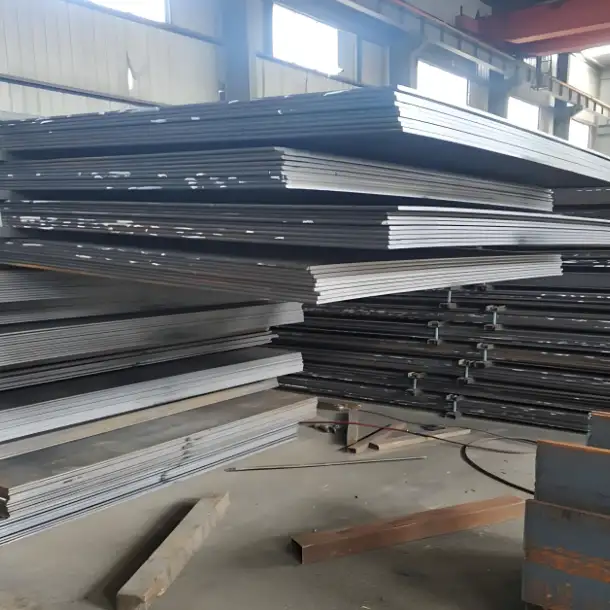
Quality, certifications and authoritative references
Buyers should insist on:
-
Mill Test Report (MTR) to EN 10204 3.1 or 3.2 as required.
-
ASME stamping for items used under jurisdiction of ASME BPVC.
-
Traceability (heat, plate, test reports).
-
Third-party inspection available on request (API, Lloyd’s, DNV, etc.) for critical service.
These requirements align with ASME/ASTM expectations for pressure-containing items.
2025 price snapshot (US / Europe / China)
Market note: steel plate prices are volatile; below are market-sourced indicative ranges for A387/SA-387 / chrome-moly pressure-vessel plates in 2025. Use these as negotiation baselines, not contract prices. Always request firm quotes and confirm lead times.
| Region | Typical 2025 price (per metric tonne), indicative | Notes / source |
|---|---|---|
| China (mill/export offers) | US$600 – US$1,000 / t (range depends on grade, thickness, quantity). | Domestic online listings and export offers for A387 plates show sub-$1,000/t offers for common grades in 2025; premium grades (Grade 91) cost more. |
| United States (domestic plate market) | US$900 – US$1,400 / t (spot plate indices vary; alloy premium increases cost). | US hot-rolled plate and alloy premiums pushed base plate pricing into roughly this range in 2025; alloy plates typically +20–50% vs plain carbon. |
| Europe (EU buyer landed) | €700 – €1,300 / t (approx. US$750–1,400/t) | European stainless / alloy plate indexes and distributor quotes show comparable ranges; logistical and regulatory costs affect landed price. |
Interpretation & procurement tips
-
Grade 91 commands a higher premium (specialized metallurgy, tighter processing and testing).
-
China factory prices can be attractive for standard grades (11, 12, 22) but verify mill capability and certification when ordering for pressure-containing service.
-
Request firm quotes including freight, packing, insurance, and inspection — total landed cost typically determines supplier selection.
MWAlloys Supplier — what we offer
MWAlloys sources and stocks ASME SA-387 / ASTM A387 plates across the listed grades. Our value proposition:
-
100% factory price — direct mill relationships reduce intermediaries.
-
Certified stock — we provide MTRs (EN 10204 3.1 / 3.2) and ASME-compliant documentation on request.
-
Fast delivery — inventory for common sizes and grades; expedited cutting, marking, and export packing available.
-
Technical support — alloy selection advice, welding specification guidance, and supply chain traceability for pressure-vessel projects.
FAQs
1. Which grade should I pick for boilers running at 450–550 °C?
For long-term operation in that band, Grade 22 or Grade 91 are typical choices depending on required creep life; Grade 22 is common for moderate elevated temperatures, Grade 91 for high-temperature, long-term creep resistance. Validate with design codes and creep tables.
2. Is Class 1 or Class 2 better?
Class 2 generally has higher tensile requirements; Class selection depends on mechanical design and code requirements. Confirm with the ASME/ASTM tables and your engineering spec.
3. Can I substitute an EN steel (e.g., 13CrMo4-5) for A387 Grade 11?
Often possible as a close match, but do not substitute without chemical, mechanical and code verification. Use equivalence charts and consult the project engineer.
4. What documentation should come with an A387 plate shipment?
Mill Test Reports (3.1/3.2), heat number traceability, inspection certificates, and any third-party inspection records required by the contract.
5. Is Grade 91 welded like Grade 22?
No. Grade 91 requires stricter welding procedure qualifications, controlled heat input and mandatory PWHT schedules. Treat Grade 91 as a specialized creep-strength material.
6. What are typical plate thickness ranges?
Mills routinely supply from a few millimetres up to 100+ mm; for thick sections and Grade 91 consult the mill for capability and recommended heat-treatment.
7. How do alloy plate prices compare with carbon steel?
Alloy plates carry a premium (alloy content, processing, tests). Expect alloy plate pricing to be well above plain carbon grades — the delta depends on market conditions.
8. Are NDE (UT/RT) requirements standardized?
ASTM/ASME specify minimum nondestructive tests; many projects add requirements — agree them in the purchase order and reflect in the MTC.
9. Where is the best place to source Grade 11/22 vs Grade 91?
Common grades (11/12/22) are widely available from multiple major mills worldwide; Grade 91 is more specialized and is typically sourced from mills with experience in creep-strength steels — verify mill history and test capability.
10. How to ensure the plate will pass acceptance testing at site?
Ensure correct grade/class on the PO, request full MTRs, define NDT scope, and include third-party witnessing for critical items. Confirm PWHT and welding procedure specifications beforehand.
Final procurement checklist
-
Confirm ASTM A387 / ASME SA-387 edition and Class.
-
Specify grade, thickness, dimensions, and any special heat treatment.
-
Require MTR (EN 10204/3.1 or 3.2), UT/RT scope, and traceability.
-
For Grade 91 order, include PWHT schedule and welding procedure qualifications.
-
Compare landed total cost (material + testing + freight + inspection), not just FOB.
-
Confirm lead time and whether supplier holds stock for immediate delivery.
When to consult original standards
For unambiguous design, fabrication and acceptance criteria always consult the actual ASTM A387 / ASME SA-387 standard text and ASME BPVC, because table values, testing intervals, definition changes and class conditions are defined there. The short technical summaries above are not a replacement for the standards in code work.
Authoritative references
- ASTM A387 / A387M — Standard Specification for Pressure Vessel Plates, Alloy Steel, Chromium-Molybdenum (ASTM International)
- ASME/ASTM A387 Grade Chart (technical datasheet / Wingate Alloys PDF)
- AISI A387 Grade 5 Technical Summary (AZoM material encyclopedia)
- European ↔ ASTM material comparison chart (DIN / EN ↔ ASTM mapping)

